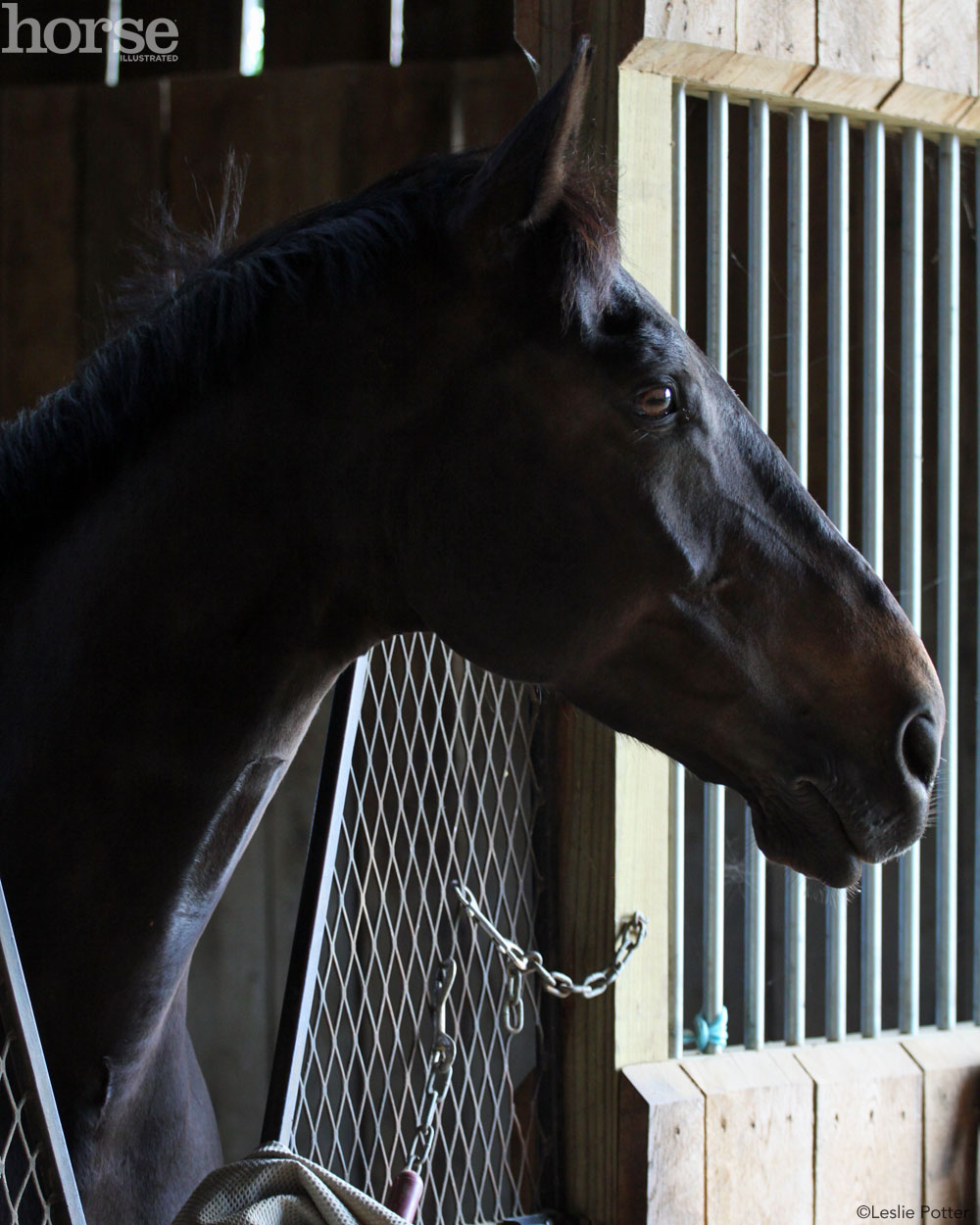
You open the stall door to put a halter on your horse and as you lead him out, you notice his back legs are very swollen. While it looks bad, he doesn’t seem to be more than mildly uncomfortable and he is still snuffling you for treats, so you know he feels OK.
Amazingly, he’s not. And, once you get off, you notice that the swelling has decreased dramatically. So what IS this mysterious issue that plagued your horse?
A Strange Swelling
Most likely your horse was “stocked up,” which is when his lower legs swell because of decreased activity (like standing in his stall). Blood and lymph pools in the legs, typically between the coronary band and the fetlock, but some horses can swell all the way up to their knees or hocks.
Horses that are stocked up are not in pain; their legs won’t feel warm to the touch, but they may be a bit stiff with all the fluid pooled in their joints. If your horse is truly stocked up, there will be no other signs; he won’t have a fever, look dull, be off his feed or be lame.
Most horses stock up in their hind legs, but all four legs can be affected. If your horse has only one swollen leg, some other issue is most likely at play (possibly a tendon or ligament injury, or an infection).
Causes of Stocking Up
Just like in humans, your horse’s heart pumps oxygenated blood through his arteries into arterioles and capillaries, where the oxygen (and nutrients) leak into surrounding tissues. The unused nutrients and waste products then drain back into the lymphatic system, which filters through your horse’s lymph nodes and back into the veins and heart.
To operate properly, the lymphatic system has to push fluid against gravity—and the key to this is the pumping motion of the digital cushion in the hooves, which literally helps push the waste products uphill with every step; it also relies on the legs, including tendons, muscles and ligaments, to push the fluid back up to the heart. When a horse is standing still for long periods of time (like in his stall), this pumping system can’t work as it is designed, and fluid can pool in the legs. Stocking up normally occurs in the hind legs as they are the furthest extremity from the heart.
Treatment and Prevention
Treatment for a horse that is stocked up is actually quite easy: Work him! Whether that means going out for a hack, longeing or even hand-walking, movement will help the swelling go down. In a young horse, the swelling can abate in as little time as 30 to 60 minutes. For an older horse, it may take a few hours of movement for the swelling to dissipate as his circulatory system’s efficiency diminishes with age. If you want to see results more quickly, you can cold hose your horse’s legs for 20 minutes or so.
The easiest way to prevent stocking up is to give your horse room to roam. Near-constant motion allows his blood and lymphatic system to operate at their best, which is why stocking up is rarely seen in horses that live outside full-time. If that’s simply not possible for your horse, there are some other tricks to help keep the swelling at a minimum.
- Give your horse as much turnout time as possible every day.
- Wrap your horse’s legs when he’s in his stall. Standing bandages with quilts are the most common solution, but the key is to provide even pressure with adequate padding. The pressure will prevent the fluid from pooling in the lower limbs. However, if your horse spends most of his time inside, it’s important that he not wear wraps 24/7. He’ll need at least some time during the day where his legs are unwrapped, and he should not wear the wraps outside or while working.
- Apply a liniment to your horse’s legs after you ride, which will increase circulation to his legs. You can also use witch hazel or rubbing alcohol. It’s important that if you rub these products in to the legs vigorously. Don’t apply wraps over these substances as that can lead to caustic burns.
Though it may look alarming, stocking up is an easily managed condition that should not affect your horse’s health and performance long-term.
Sarah Coleman has a soft spot for chestnuts with chrome, including her off-the-track Thoroughbred that she competes in the hunters. Based in Lexington, Ky., she is the Director of Education and Development for New Vocations Racehorse Adoption Program.







Hello,
My Mare has been outside her whole life 24/7/365. She has a great run in shed that she stands in quite often for long periods of time. She is 16 and I try to work her 3-4 times a week. She has been stocking up almost daily for the past 4 months. I notice it more on humid days. I have cold hoses and used standing wraps or sport boots to push the fluid out. but they create more heat in her fetlocks. I do notice it more in the am but what should I do to minimize the welling?
Thank You, Cheryl Gerwatowski